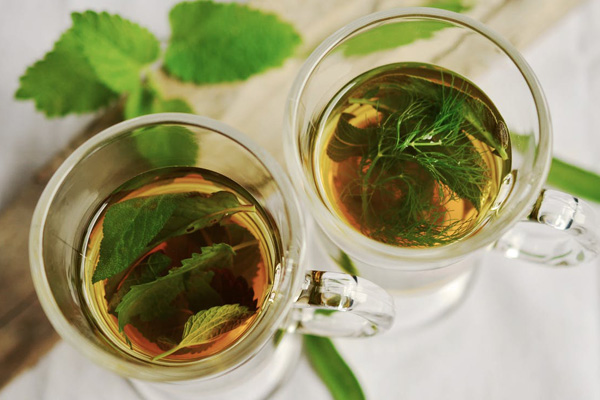Herbalife Things To Know Before You Buy
Herbalife Things To Know Before You Buy
Blog Article
The Ultimate Guide To Herbalife
Table of ContentsThe Only Guide for HerbalifeMore About HerbalifeThings about HerbalifeA Biased View of Herbalife

In 1990, expense related to "alternative" treatment in the USA was approximated to be US$ 13.7 billion. This had actually doubled by the year 1997, with natural medicines expanding faster than any other different treatment (Eisenberg et al. 1998). In Australia, copyright, and the UK, annual expense on traditional medicine is approximated to be US$ 80 million, US$ 1 billion, and US$ 2.3 billion, specifically.
The total industrial worth of the ethnobotanicals market can not be ignored. In 1995, the complete turnover of nonprescription-bound organic medicines in pharmacies was equivalent to almost 30% of the complete turn over of nonprescription-bound medications in Germany, and in the United States, the annual retail sales of natural products was approximated to be US$ 5 - herbalife shakes near me.1 billion.
Some Known Questions About Herbalife.
In China, the overall value of organic medication produced in 1995 reached 17.6 billion Chinese yuan (roughly US$ 2.5 billion; Eisenberg et al. 1998; THAT 2001). This pattern has proceeded, and annual revenues in Western Europe reached US$ 5 billion in 2003-2004 (De Smet 2005). In China, sales of herbal items amounted to US$ 14 billion in 2005, and revenue from organic medicines in Brazil was US$ 160 million in 2007 (Globe Wellness Organization; http://www.who.int/topics/traditional_medicine/en/). In China, in 2003, typical organic medicines played a noticeable function in the approach to have and treat serious acute respiratory system disorder (SARS), and in Africa, a conventional herbal medication, the Africa blossom, has been made use of for decades to treat wasting symptoms related to HIV (De Smet 2005; Tilburt and Kaptchuk 2008).
Herbs and plants can be processed and can be taken in various ways and types, and they consist of the entire herb, teas, syrup, vital oils, ointments, salves, rubs, capsules, and tablets that consist of a ground or powdered form of a raw herb or its dried remove. Plants and herbs remove vary in the solvent made use of for extraction, temperature, and removal time, and include alcoholic essences (tinctures), vinegars (acetic acid extracts), warm water extract (tisanes), lasting boiled essence, normally roots or bark (preparations), and cold mixture of plants (macerates).

About 200 years back, the initial pharmacologically energetic pure substance, morphine, was created from opium extracted from seeds vessels of the poppy Papaver somniferum. This exploration showed that drugs from plants can be cleansed and provided in specific does despite the resource or age of the material (Rousseaux and Schachter 2003; Hartmann 2007).
The Greatest Guide To Herbalife
With this ongoing fad, items from plants see here now and natural resources (such as fungis and marine bacteria) or analogs inspired by them have contributed considerably to the commercial medication preparations today. Examples consist of anti-biotics (e.g., penicillin, erythromycin); the heart energizer digoxin from foxglove (Digitalis purpurea); salicylic acid, a precursor of aspirin, originated from willow bark (Salix spp.); reserpine, an antipsychotic and antihypertensive medicine from Rauwolfia spp.; and antimalarials such as quinine from Cinchona bark and lipid-lowering agents (e.g., lovastatin) from a fungi (Rishton 2008; Schmidt et al.
Also, even more than 60% of cancer therapies on the marketplace or in testing are based on all-natural items. Of 177 medications approved worldwide for treatment of cancer cells, greater than 70% are based on all-natural items or mimetics, a lot of which are improved with combinatorial chemistry. Cancer rehabs from plants include paclitaxel, separated from the Pacific yew tree; camptothecin, derived from the Chinese "pleased tree" Camptotheca acuminata and made use of to prepare irinotecan and topotecan; and combretastatin, originated from the South African bush willow (Brower 2008.
2010). In between 2005 and 2007, 13 medications acquired from natural products were approved in the United States. Greater than 100 natural product-based medicines are in scientific researches (Li and Vederas 2009), and of the overall 252 medicines in the World Wellness Organization's (WHO) vital medication listing, 11% are specifically of plant origin (Sahoo et al.
WHO has actually recognized the important payment of traditional medication to supply vital treatment (Globe Health and wellness Company, http://www.who.int/topics/traditional_medicine/en/. In 1989, the united state Congress established the Workplace of Natural Medicine within the National Institutes of Health and wellness to encourage scientific study in the field of typical medication (http://nccam.nih.gov, last accessibility: November 5, 2010), and the European Scientific Cooperative on Phytotherapy (ESCOP) was founded in 1989 with the goal of progressing the clinical standing and harmonization of phytomedicines at the European level (www.escop.com, last accessibility: November 5, 2010).
Get This Report about Herbalife
In the USA, the National Center for Complementary and Natural Medicine at the National Institutes of Health and wellness spent approximately US$ 33 million on herbal medications in the monetary year 2005; in 2004, the National Canadian Institute devoted virtually US$ 89 million for examining a series of typical therapies. While this range of investment is low compared to the total r & d costs of the pharmaceutical sector, it nonetheless mirrors real public, industry, and governmental rate of interest in this area (Li and Vederas 2009). With remarkable expansion in the passion in and use of traditional medicines worldwide, two primary locations of concern occur that bring major challenges.

Report this page